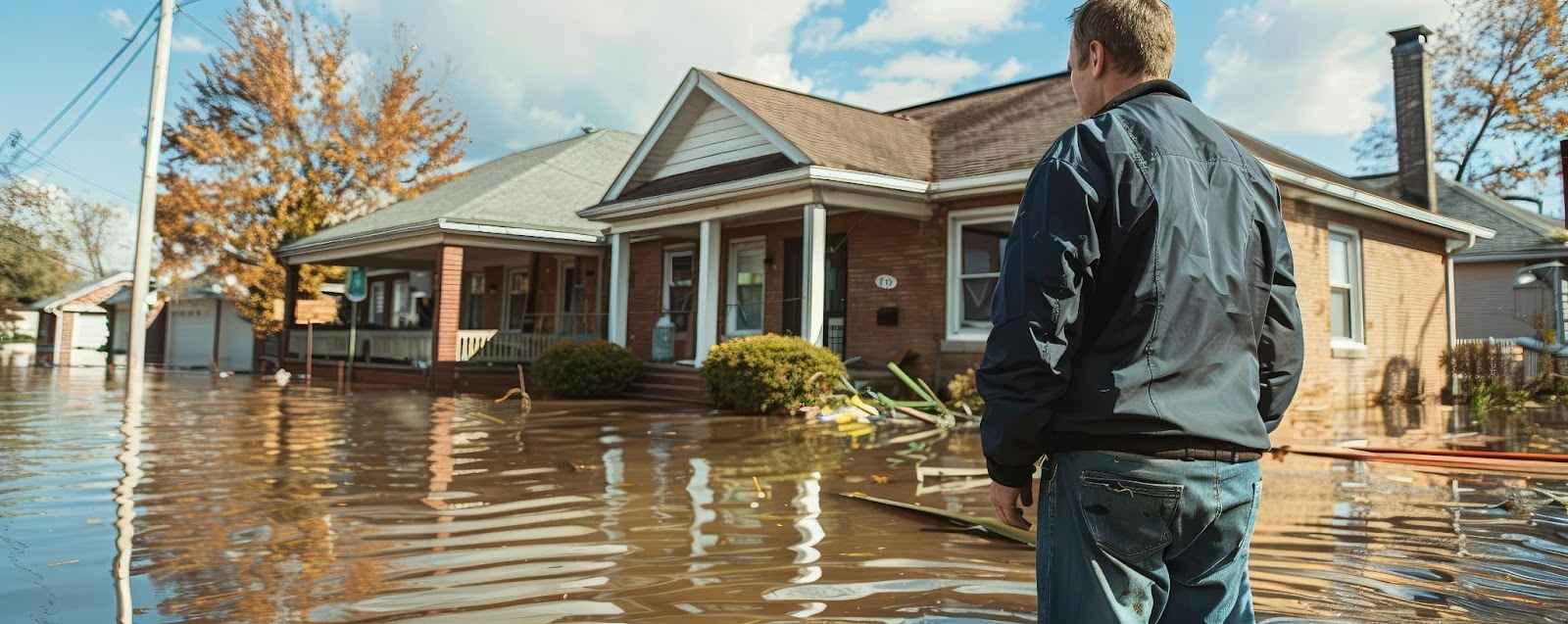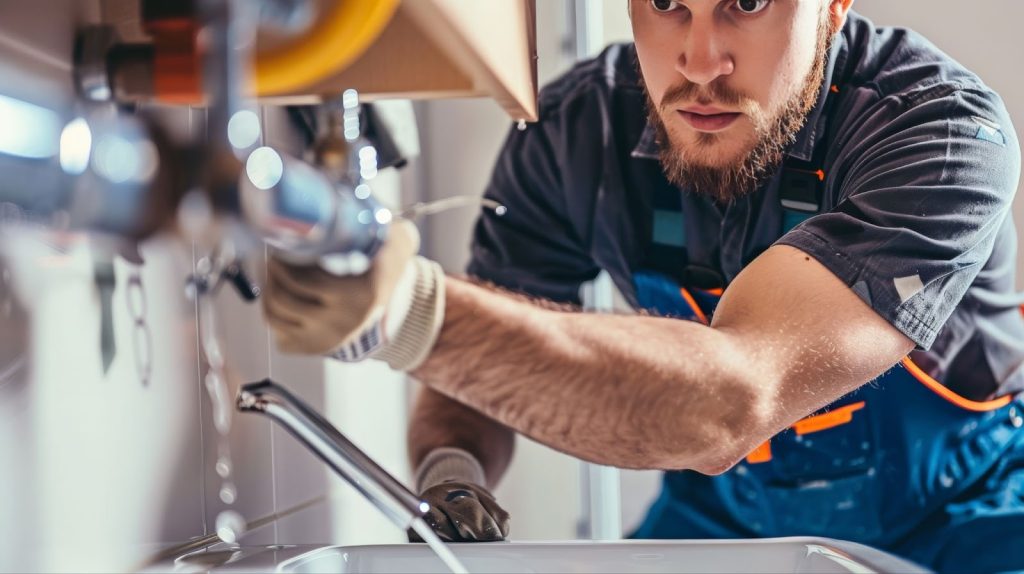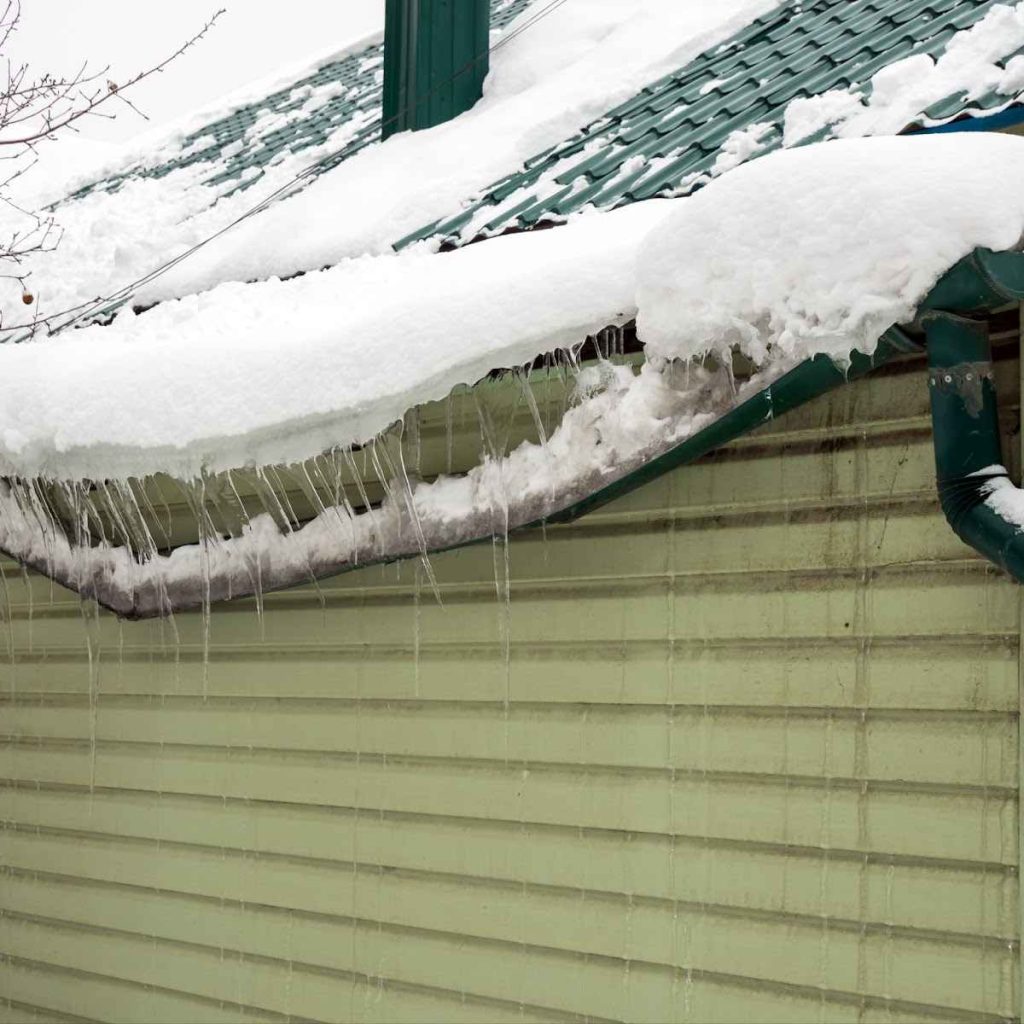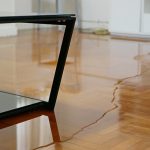What Do I Do About My House Water Damage? Your Step By Step Guide
Discovering water damage in your home is a nightmare scenario for any homeowner. Whether it’s from a burst pipe, a flood, or a leaky roof, the presence of unwanted water quickly escalates into a major crisis, threatening the structure of your house and the safety of your family.
The key to mitigating the damage and restoring your home efficiently lies in acting quickly. This comprehensive guide will walk you through the essential steps to manage house water damage effectively, from the initial discovery to the final touches of restoration.
By following this step-by-step approach, you’ll learn how to handle the situation safely, deal with insurance, and take preventative measures to safeguard against future incidents. Let’s dive in and equip you with the knowledge to tackle water damage head-on, minimizing stress and ensuring a smoother recovery process.
What is water damage?
Water damage describes the destruction that water causes when it infiltrates various parts of a house or property. It occurs when excessive moisture or water enters structures through leaks, floods, or other means. Water damage can wreak havoc on a home’s integrity, leading to costly repairs, health hazards, and even structural collapse if not addressed promptly.
The severity of water damage varies, ranging from minor issues like dampness and stains to major problems such as warped floors, crumbling walls, and mold growth.
Water damage can occur in any area of a house — from the basement to the attic and even on the roof. Identifying the signs of water damage early on will help prevent further deterioration and reduce the overall expenses associated with repairs. Let’s take a closer look at each of the signs of house water damage.
Leaky or burst pipes
One common cause of water damage is leaky or burst pipes. If left untreated, even a small leak will escalate into a significant issue, causing water to seep into walls, floors, and ceilings. It’s important to address plumbing problems, such as worn-out pipes, faulty connections, or clogs, promptly to avoid extensive water damage.
Natural disasters
Another source of water damage is natural disasters like flooding or heavy rain. Severe storms or improper drainage systems lead to water accumulation around a house’s foundation, resulting in water penetrating the structure. Flooding can damage walls, furniture, electrical systems, and appliances, sometimes beyond repair. Those costs quickly add up, too.
Household appliances
Household appliances like washing machines, dishwashers, and refrigerators can all cause water damage. Over time, these appliances may become worn out, leading to plumbing malfunctions, leaks, or even flooding. Regular maintenance, inspection, and repair of these appliances go a long way in preventing water damage and extending their lifespan.
Now that we know what causes water damage, let’s look at what to do about it, starting with the first 24 hours. As you’ll learn, the first 24 hours after house water damage are the most important. The actions you take now will minimize the total, overall damage and help you bounce back more quickly.

Immediate actions: The first 24 hours
Discovering water damage in your home is overwhelming and frustrating. No one will deny that. But even if you’re in shock and don’t know what to do, it’s still important to take immediate action within the first 24 hours to minimize further damage and prevent expensive repairs.
In this section, we will guide you through the necessary steps to effectively deal with house water damage. Remember, acting promptly is key to safeguarding your home and ensuring the well-being of your family.
Step 1: Shut off the water supply
Upon noticing water damage, the first step is to locate and shut off the main water supply valve. This valve is typically found near the water meter or where the main water line enters your house. Turning it off will prevent additional water from leaking and causing further harm, allowing you to focus on the damage that’s already there.
Step 2: Protect yourself
Water damage may render your home because of electrical hazards, structural damage, or the growth of mold and bacteria. Therefore, it’s crucial to ensure your safety first.
Before touching any electrical equipment or stepping into standing water, turn off the electricity by flipping the circuit breaker. Wear rubber gloves, boots, and a mask to protect yourself in water-damaged areas.
Step 3: Document the damage
Before you start cleaning or removing any items, take the time to document the extent of the damage. Use your smartphone or a camera to take detailed photos from various angles.
This visual evidence will aid your insurance claims and provide a clear record of your home’s original condition. Without these photos, it would be impossible to receive the coverage you need from your insurance company, making this step absolutely critical.
Step 4: Extract standing water
Start by removing any excess water from your home. Use a wet/dry vacuum, a mop, or towels to soak up standing water. Ensure proper ventilation by opening windows and utilizing fans or dehumidifiers to aid in the drying process. Remember to monitor the moisture levels, as excessive humidity encourages mold growth.
Step 5: Salvage valuables and personal belongings
While removing water-damaged items may be distressing, it’s essential to salvage as many valuables and personal belongings as possible. Move any items at risk of further damage to a safe and dry location. It’s crucial to prioritize items with sentimental or monetary value, such as photographs, important documents, and cherished possessions.
Step 6: Remove wet carpeting and padding
Sadly, wet carpeting and padding are breeding grounds for mold and bacteria. If your carpet has been saturated and the damage is extensive, it’s best to remove it. Start by carefully lifting the carpet edges and pulling them away from the floor. Roll up the carpet and dispose of it properly. Remember to wear protective gear to avoid direct contact with potentially hazardous materials.
Step 7: Wipe down and disinfect
To minimize the risk of mold growth and bacterial contamination, it’s vital to thoroughly clean and disinfect all affected surfaces. Use a mild detergent or a specialized disinfectant to wipe down walls, floors, and furniture. Pay special attention to areas that were in direct contact with water, as well as areas prone to mold, such as bathrooms and basements.
Step 8: Seek professional help
While you may be able to handle small-scale water damage, severe cases often necessitate the expertise of professionals.
If you’re uncertain about the extent of the damage or if the affected area is significant, it’s wise to contact a water damage restoration company. Trained professionals possess the necessary equipment and knowledge to assess the situation accurately and mitigate further harm.
Step 9: Contact your insurance company
Once you have taken the initial steps to stabilize the situation, promptly contact your insurance company to report the water damage.
Provide detailed information, including photographs, and be prepared to answer questions about the cause and extent of the damage. Following their instructions and protocols will help expedite the claims process and maximize your chances of receiving fair compensation.

Dealing with insurance
Whether your house water damage is caused by a burst pipe, a leaky roof, or a flood, the effects are devastating. Not only does it pose a threat to the structure of your home, but it can also ruin your valuable possessions and create a breeding ground for mold and mildew.
That is why having proper insurance coverage is crucial to mitigate the financial burden of repairing and restoring your home.
Understanding your insurance policy
The first step in dealing with water damage is to thoroughly understand your insurance policy. Homeowners insurance typically covers water damage caused by sudden and accidental events, such as burst pipes or appliance leaks.
However, it may not cover damage resulting from poor maintenance or neglect. Therefore, it is essential to review your policy carefully to determine what is covered.
Filing a claim
Acting promptly is vital in the event of water damage. Start by contacting your insurance provider as soon as you discover the damage. Most policies have a specified time frame for reporting a claim, so make sure to adhere to it.
When you contact your insurance company, be prepared to provide detailed information about the damage. You’ll want to share all the pictures and videos you’ve taken of the affected area, as this will help your insurance company determine how bad the damage is.
Also, keep records of any conversations with your insurance agent, including names, dates, and what was discussed. This documentation will help ensure a smooth claims process, especially if you’re working with multiple people.
Meeting with an adjuster
After filing a claim, your insurance company will assign an adjuster to assess the extent of the damage. The adjuster will schedule an appointment to visit your property, inspect the affected areas, and evaluate the cost of repairs.
You’ll want to be present during this appointment to answer any questions and provide additional information. Remember to keep a record of the adjuster’s name and contact information for future reference.
Mitigating further damage
Once you have documented the damage, it’s very important to take immediate action to prevent further loss. This may include temporarily fixing the source of the water damage, such as shutting off the water supply or covering a damaged roof with a tarp.
Keep receipts or invoices for any emergency repairs made to prevent additional damage. Remember, insurance companies expect the policyholder to take reasonable steps to mitigate further harm. Failure to do so may result in future house water damage not being covered by insurance.
Obtain multiple repair estimates
To ensure you receive fair compensation for the repairs, it is advisable to obtain multiple repair estimates from reputable contractors. Seek recommendations from friends, family, or neighbors who have dealt with water damage in the past.
Compare the estimates and choose a contractor who offers quality services at a reasonable price. Remember, your insurance company may have its preferred list of contractors, but you have the right to choose your own.
Negotiating a settlement
Once you have obtained repair estimates, you can negotiate a fair settlement with your insurance company. If their initial offer seems inadequate, provide evidence and documentation supporting your claim. The pictures, videos, and estimates you gathered earlier will be useful during this process.
Be patient and persistent when communicating with your insurance company, and don’t hesitate to seek legal assistance if necessary. A public adjuster (not the same as an insurance adjuster) can also really help during the negotiation process.
While insurance adjusters work for the insurance company and have their best interest at heart, public adjusters work for you and are there to help you get the best coverage possible for the damage your home has sustained.
Preparing for a denial
Unfortunately, insurance companies may deny claims for various reasons. If your claim is denied, carefully review the denial letter and seek clarification on why it was denied.
Insurance policies are complex, and understanding the specific reasons for denial is paramount when deciding on the next steps. If you believe the denial is unjustified, consult with a public adjuster or an attorney specializing in insurance claims to explore your options. A denied claim is not the end of the road.

Professional remediation and restoration
When facing significant water damage, it’s important to understand that professionals possess the knowledge, skills, and equipment necessary to address the situation effectively.
Here are several reasons why seeking professional remediation and restoration services is your best course of action instead of trying to remediate the damage on your own.
1. Expertise and experience
Professional remediation and restoration companies have a team of skilled specialists trained in handling various types and extents of water damage. They possess the experience to assess the damage accurately and identify hidden areas that may be affected, preventing any long-term issues that could worsen over time.
2. Safety assurance
Water damage leads to the growth of mold, mildew, and bacteria, which may pose health risks to you and your family. Professionals understand the potential dangers associated with water damage and take necessary precautions to ensure your safety throughout the remediation and restoration process.
3. Timely intervention
Quick action is vital when dealing with water damage to prevent further deterioration and minimize restoration costs. Professional remediation and restoration service providers are available 24/7, allowing for prompt response and immediate intervention to mitigate the damage.
4. Access to specialized equipment
Professional remediation and restoration companies invest in advanced equipment and tools designed specifically for water damage restoration. These specialized tools help in effective water extraction, drying, dehumidifying, and sanitizing of affected areas, ensuring a thorough restoration process.
Preventing future water damage
In this section, we will explore practical steps and useful tips that you can easily implement to safeguard your home from future water damage.
1. Keep an eye on your roof
Your roof is the first line of defense against water infiltration. Regularly inspect your roof for any signs of damage, such as missing or damaged shingles, cracked flashing, or clogged gutters. Ensure that your gutters and downspouts are clear of debris like leaves and sticks, allowing water to flow freely away from your home’s foundation.
If you notice any issues with your roof, contact a professional roofer to address them promptly and prevent potential water damage.
2. Maintain your plumbing system
A well-maintained plumbing system helps prevent water damage indoors. Look for any signs of leaks, such as water stains on the walls or ceilings, damp areas around pipes, or unusually high water bills.
Regularly inspect visible pipes, faucets, and toilet tanks for leaks or drips and repair them immediately. In colder climates, insulation helps prevent exposed pipes from freezing and bursting during winter, which may lead to significant water damage.
3. Install and maintain proper drainage
Proper drainage around your home helps prevent water from pooling near the foundation, which can eventually seep into your basement or crawl space. Ensure that the ground slopes away from the foundation, directing water away from your home.
If necessary, consider installing French drains or exterior drain tiles to channel excessive water away effectively. Regularly inspect and maintain these drainage systems to ensure they are functioning correctly.
4. Seal windows and doors
Windows and doors are potential entry points for water during heavy rain or storms. Regularly check the seals around windows and doors for any gaps or cracks. Replace worn-out or damaged weatherstripping to ensure they are watertight. If you notice any gaps, consider applying caulk to seal them properly.
Properly sealed windows and doors will not only prevent water damage but also help with energy efficiency and insulation.
5. Install a sump pump
If you have a basement or live in an area prone to flooding, installing a sump pump is immensely beneficial. A sump pump automatically detects rising water levels and pumps it away from your home, keeping your basement dry.
Ensure that your sump pump is in good working condition by testing it periodically and cleaning any debris or dirt in the pit. Consider having a backup power source, such as a battery or generator, in case of a power outage during a storm.
6. Be mindful of appliance maintenance
Household appliances that use water, such as washing machines, dishwashers, and water heaters, can be potential sources of water damage if not properly maintained.
Regularly inspect hoses, valves, and connections for leaks, and replace them immediately if needed. Consider replacing rubber hoses with stainless steel braided ones, which are less likely to burst.
Additionally, follow the manufacturer’s maintenance recommendations for your appliances, such as flushing your water heater annually, to prevent sediment build-up and potential leaks.

7. Stay vigilant during winter
Winter weather presents specific challenges regarding water damage. Freezing temperatures cause pipes to freeze and burst, leading to substantial water damage.
To prevent this, insulate exposed pipes with pipe sleeves or heat tape. Disconnect and store garden hoses, close outdoor water valves, and drain any residual water to prevent frozen pipes.
Keeping your home adequately heated and allowing warm air to circulate around indoor pipes can also help prevent freezing. In severe cold conditions, consider leaving cabinet doors open to allow warmer air to reach pipes under sinks.
8. Educate your family
One of the best ways to prevent water damage is by educating your family members, especially children, on the importance of water conservation and responsible water use. Teach them not to flush inappropriate items down the toilet, such as wipes or sanitary products, as they will cause clogs and backups.
Additionally, teach them to turn off faucets tightly and report any leaks or drips they notice in the house promptly. By fostering a culture of awareness and responsibility, you can significantly reduce the risk of water damage in your home.
Contact Hudson Douglas Public Adjusters today
One of the most critical steps when facing house water damage is ensuring that your insurance company adequately covers the necessary repairs. Navigating insurance claims can be daunting, and securing a fair settlement is crucial to restoring your home without undue financial strain.
This is where the expertise of a public adjuster becomes invaluable. Hudson Douglas Public Adjusters specializes in advocating for homeowners like you. We understand the complexities of insurance policies and the nuances of claim negotiation.
Our team is dedicated to ensuring that you receive the maximum compensation possible, enabling comprehensive repairs and restoration. Don’t let the overwhelming process of insurance claims add to your stress. Let us handle the fine details and fight on your behalf.
If you’re dealing with water damage and are worried about insurance coverage, contact Hudson Douglas Public Adjusters today. We’re here to ensure that your claim is handled efficiently and fairly, giving you peace of mind and the support you need during this challenging time.
Contact Hudson Douglas Public Adjusters now for all your public adjuster needs and start your journey to a fair settlement and a fully restored home.




